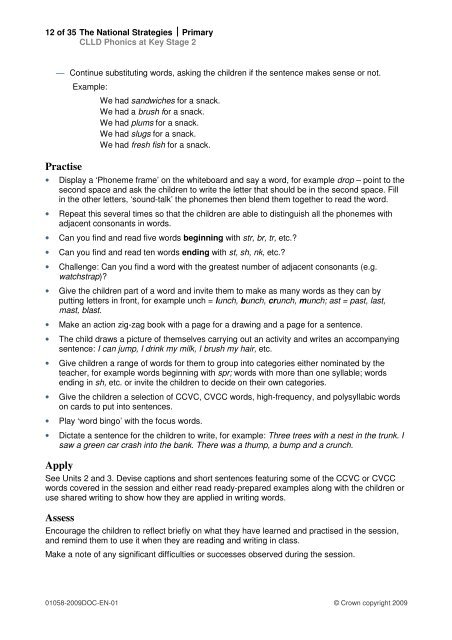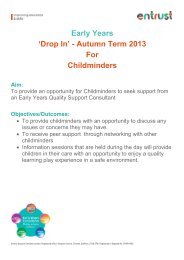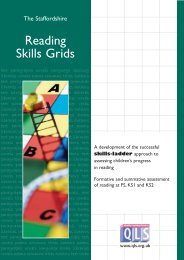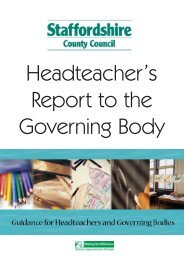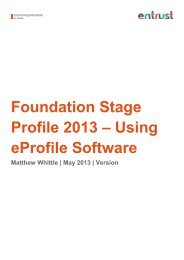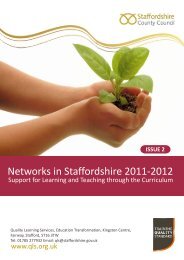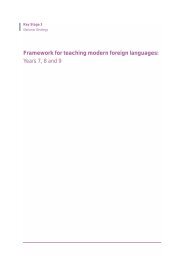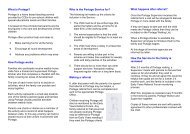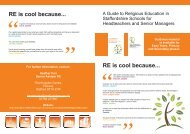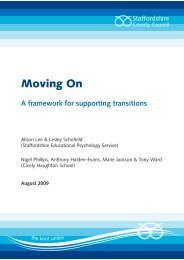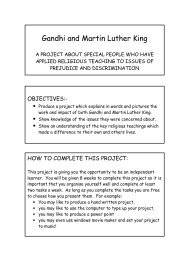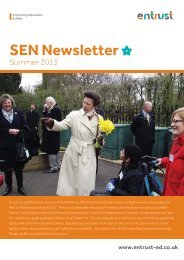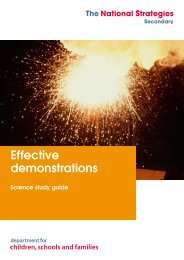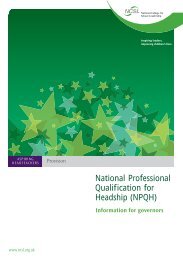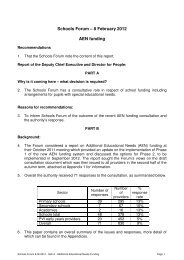CLLD Phonics at Key Stage 2 - School-Portal.co.uk
CLLD Phonics at Key Stage 2 - School-Portal.co.uk
CLLD Phonics at Key Stage 2 - School-Portal.co.uk
You also want an ePaper? Increase the reach of your titles
YUMPU automatically turns print PDFs into web optimized ePapers that Google loves.
12 of 35 The N<strong>at</strong>ional Str<strong>at</strong>egies ⏐ Primary<br />
<strong>CLLD</strong> <strong>Phonics</strong> <strong>at</strong> <strong>Key</strong> <strong>Stage</strong> 2<br />
— Continue substituting words, asking the children if the sentence makes sense or not.<br />
Practise<br />
Example:<br />
We had sandwiches for a snack.<br />
We had a brush for a snack.<br />
We had plums for a snack.<br />
We had slugs for a snack.<br />
We had fresh fish for a snack.<br />
• Display a ‘Phoneme frame’ on the whiteboard and say a word, for example drop – point to the<br />
se<strong>co</strong>nd space and ask the children to write the letter th<strong>at</strong> should be in the se<strong>co</strong>nd space. Fill<br />
in the other letters, ‘sound-talk’ the phonemes then blend them together to read the word.<br />
• Repe<strong>at</strong> this several times so th<strong>at</strong> the children are able to distinguish all the phonemes with<br />
adjacent <strong>co</strong>nsonants in words.<br />
• Can you find and read five words beginning with str, br, tr, etc.?<br />
• Can you find and read ten words ending with st, sh, nk, etc.?<br />
• Challenge: Can you find a word with the gre<strong>at</strong>est number of adjacent <strong>co</strong>nsonants (e.g.<br />
w<strong>at</strong>chstrap)?<br />
• Give the children part of a word and invite them to make as many words as they can by<br />
putting letters in front, for example unch = lunch, bunch, crunch, munch; ast = past, last,<br />
mast, blast.<br />
• Make an action zig-zag book with a page for a drawing and a page for a sentence.<br />
• The child draws a picture of themselves carrying out an activity and writes an ac<strong>co</strong>mpanying<br />
sentence: I can jump, I drink my milk, I brush my hair, etc.<br />
• Give children a range of words for them to group into c<strong>at</strong>egories either nomin<strong>at</strong>ed by the<br />
teacher, for example words beginning with spr; words with more than one syllable; words<br />
ending in sh, etc. or invite the children to decide on their own c<strong>at</strong>egories.<br />
• Give the children a selection of CCVC, CVCC words, high-frequency, and polysyllabic words<br />
on cards to put into sentences.<br />
• Play ‘word bingo’ with the focus words.<br />
• Dict<strong>at</strong>e a sentence for the children to write, for example: Three trees with a nest in the trunk. I<br />
saw a green car crash into the bank. There was a thump, a bump and a crunch.<br />
Apply<br />
See Units 2 and 3. Devise captions and short sentences fe<strong>at</strong>uring some of the CCVC or CVCC<br />
words <strong>co</strong>vered in the session and either read ready-prepared examples along with the children or<br />
use shared writing to show how they are applied in writing words.<br />
Assess<br />
En<strong>co</strong>urage the children to reflect briefly on wh<strong>at</strong> they have learned and practised in the session,<br />
and remind them to use it when they are reading and writing in class.<br />
Make a note of any significant difficulties or successes observed during the session.<br />
01058-2009DOC-EN-01 © Crown <strong>co</strong>pyright 2009


